- News
- Reviews
- Bikes
- Components
- Bar tape & grips
- Bottom brackets
- Brake & gear cables
- Brake & STI levers
- Brake pads & spares
- Brakes
- Cassettes & freewheels
- Chains
- Chainsets & chainrings
- Derailleurs - front
- Derailleurs - rear
- Forks
- Gear levers & shifters
- Groupsets
- Handlebars & extensions
- Headsets
- Hubs
- Inner tubes
- Pedals
- Quick releases & skewers
- Saddles
- Seatposts
- Stems
- Wheels
- Tyres
- Tubeless valves
- Accessories
- Accessories - misc
- Computer mounts
- Bags
- Bar ends
- Bike bags & cases
- Bottle cages
- Bottles
- Cameras
- Car racks
- Child seats
- Computers
- Glasses
- GPS units
- Helmets
- Lights - front
- Lights - rear
- Lights - sets
- Locks
- Mirrors
- Mudguards
- Racks
- Pumps & CO2 inflators
- Puncture kits
- Reflectives
- Smart watches
- Stands and racks
- Trailers
- Clothing
- Health, fitness and nutrition
- Tools and workshop
- Miscellaneous
- Buyers Guides
- Features
- Forum
- Recommends
- Podcast
review
£1,999.99
VERDICT:
Fast and responsive race bike that excels on descents and is no slouch on climbs
Weight:
8,650g
Contact:
At road.cc every product is thoroughly tested for as long as it takes to get a proper insight into how well it works. Our reviewers are experienced cyclists that we trust to be objective. While we strive to ensure that opinions expressed are backed up by facts, reviews are by their nature an informed opinion, not a definitive verdict. We don't intentionally try to break anything (except locks) but we do try to look for weak points in any design. The overall score is not just an average of the other scores: it reflects both a product's function and value – with value determined by how a product compares with items of similar spec, quality, and price.
What the road.cc scores meanGood scores are more common than bad, because fortunately good products are more common than bad.
- Exceptional
- Excellent
- Very Good
- Good
- Quite good
- Average
- Not so good
- Poor
- Bad
- Appalling
If it's a modern, carbon fibre, disc brake-equipped road bike built around a race-focused geometry that you crave, the Vitus Vitesse Evo Disc is the bike for you. At £1,999.99 (currently discounted by £100) it's an affordable package, backed up by superb performance.
In its current form, Vitus's history is short, but before Chain Reaction Cycles resurrected the brand, Vitus enjoyed a long and illustrious past, winning many races through the 1970s and 80 most notably thanks to the legendary Sean Kelly. Since 2010, when CRC took on Vitus, new models have been coming thick and fast.
Buy Vitus Vitesse Evo Disc Ultegra
Performance
It doesn't take long before the real character and potential of the Vitesse Evo are revealed. It offers visceral performance, quick steering and unexpected speed that takes a few miles to dial in to. It's a thrilling and rewarding ride, backed up by decent equipment choices, and all at a competitive price.
The geometry is race-focused. It's based on the regular Vitesse Evo, a UCI-approved frame raced by the An Post Chain Reaction professional team. I tested a 56cm (one of seven sizes) and the top tube measures 560mm with a 155mm head tube, 405mm chainstays and 990mm wheelbase; aggressive numbers by any measure. If you do stack and reach (the vertical and horizontal measurements from the centre of the bottom bracket to the top of the head tube), it's 548mm and 382mm respectively.
And it's one helluva quick bike. The carbon frame has been designed to be stiff through the use of oversized tube profiles and bottom bracket, and a tapered head tube. And it's a success. Stomp on the pedals and there's an intoxicating immediacy to the way it transfers your power that will have you attacking every rise and crest in the pursuit of more speed.
The downside of the oversized frame features is that the ride is far from the smoothest. Despite Vitus suggesting it's as comfortable on 200km sportives as it is 'at the sharp end of the peloton', it's no comfortable endurance bike, that's for sure. There's quite a lot of feedback through the frame, despite the 27.2mm seatpost, and the front end is noticeably rigid and can be punishing on particularly rough sections of road.
But where the front end can feel hard and uncompromising when you're cruising along enjoying the views and conversation, during a flat-out sprint or steep out-of-the-saddle climb that same rigidity provides astonishing performance. You can really push and lean on the front of the bike and it pushes back with just the right amount. Front end rigidity is a small price to pay for the performance this bike is clearly designed to provide.
It climbs well, despite the 8.5kg weight, with little sense that the bike is doing anything other than translating your power input into forward motion. The gearing, a compact chainset and 11-25 cassette, provided enough range for my local steep climbs, but some might prefer an 11-28 cassette for increased range. Equally, a semi-compact 52/36 chainset would better suit the performance credentials of Vitus – this is a bike I would happily race if British Cycling allowed it.
There's plenty of grip from the 25mm wide Michelin Pro 4 tyres to really exploit the performance of the frameset. The high stiffness provides plenty of feedback from the tyres, enabling you to push the bike around with ease, while the short wheelbase keeps the handling nimble, letting you dart from apex to apex.
The Shimano flat mount hydraulic disc brakes deliver a solid performance. Descending is a highlight of the Vitesse Evo's skills package, and the frame, helped by the thru-axles at both ends, copes well with heavy braking with no flex in such situations.
Say what you dislike about disc brakes, on the descents there's no denying hydraulic disc brakes offer superior control to rim brakes. I could ride tricky or fast descents with more confidence and safety, better able to control the speed when required using just single-finger application on the brake lever. And there's no noise, no squealing or howling.
Read more: 22 of 2017's hottest disc-brake-equipped road bikes
Frame and equipment
Like the regular Vitesse Evo, the new Vitesse Evo Disc is made from T700 unidirectional high-modulus carbon fibre, with an emphasis on oversizing where possible. There's a BB386 Evo bottom bracket shell that allows the seat tube, down tube and chainstays to be similarly oversized to gain as much stiffness as possible.
There's also a tapered head tube and a full carbon fibre fork. The frame has a clean appearance because of the fully internally routed gear and brake cables, the gear cables running inside the down tube and the rear brake inside the top tube. Out back, the seatstays are slimmed down and there's a 27.2mm seatpost in an effort to temper the stiffness of the frame with a degree of compliance. As I've already mentioned, the disc brakes are fitted with the flat mount standard and 12mm thru-axles front and rear.
A full Shimano Ultegra 6800 11-speed groupset, combining mechanical gears with hydraulic disc brakes, is a trusted choice. Gear changes are slick and quiet, and the brakes are the best on the market right now. The compact 50/34 chainset and 11-25 cassette provided enough range for my riding, but I'm sure some will prefer the more popular 11-28 cassette for its lower gears on steep gradients.
Vison's Team 30 wheelset has a 30mm deep aluminium rim, aero bladed spokes and an asymmetric 2:1 lacing pattern on the rear wheel to optimise wheel stiffness. It's heavy at nearly 2kg, and this does take the edge off the bike's speed and sharpness a little, a fact highlight when I swapped to some lighter aero wheels just to see how the Vitesse took such an upgrade.
Michelin's Pro 4 tyres offer good speed and predictable grip in a range of conditions. It's nice to see Vitus finding room in the budget for some high-quality tyres on this bike, at a price when we sometimes see cheaper tyres being fitted.
There's nothing fancy about the FSA and Vitus finishing kit, but it's all reliable stuff. The FSA handlebar's compact shape is comfortable whether on the hoods or drops, and the Gossamer Pro stem matches the bar. Vitus supplies the aluminium seatpost and saddle, which I found comfortable for a few hours, but longer rides revealed that the shape and my posture do not really get on – a saddle change would be on the cards if I was buying this bike.
All that equipment tots up to 8.5kg (18.7lb), which is a fair amount of extra heft over the 7.72kg similarly specced rim-brake version that Mat has previously tested. It's right for a bike of this specification, though; clearly, if weight is a concern then you'd buy the regular bike and be happy, but if you want disc brakes there's a small weight increase penalty to pay.
Only if you tested both bikes side by side would you really reveal what that weight difference equates to, but if you ignore it and focus on the ride, it soon fades into insignificance. The Vitesse Evo offers a great ride.
Conclusion
So, would I buy the bike? That's the question I always ask myself during the review process, and after just a few rides on the Vitus Vitesse Evo Disc, I was of the opinion that yes, I would. It satisfies my urge to ride fast up, down and across the landscape, and the brakes make it more fun on the descents and capable in all weathers.
Vitus has clearly made it its objective to offer seriously capable and high-performance products, and with Chain Reaction Cycles' clout it also manages to offer killer value for money. A full carbon race bike with a Shimano Ultegra disc groupset and decent parts at less than two grand is hard to fault. Okay, so the wheels are a bit heavy, but unless you're racing or a weight weenie, you'll be just fine.
It's not just the equipment but how it all comes together as a package that is key to this bike. As I said at the start of this review, if you're looking for a modern, carbon fibre, disc brake-equipped road bike with a racy position and race bike handling, the Vitesse Evo doesn't disappoint. It's a gloriously enjoyable ride.
Second opinion: Mat has his say
Dave tipped me the wink that the Vitus Vitesse Evo Disc offers very good value for money, so I took it out for a few rides in Italy last week.
I'd echo Dave's opinion that it provides a 'thrilling and rewarding ride'. The Vitus responds keenly to your effort, the chunky tubes holding firm when you jack up the power to maximum on the climbs, and it feels confident and assured on the descents.
I'm between sizes with Vitus (you can choose between a 56cm and a 58cm top tube, whereas I really need a 57) and that meant I had quite a bit more seatpost extending out of the 56cm frame than Dave did. This definitely meant I had more flex at the saddle to smooth the ride.
To me, the overall package takes some beating at this price point. The Vitus Vitesse Evo Disc feels like a bike that's way more expensive than it actually is.
Verdict
Fast and responsive race bike that excels on descents and is no slouch on climbs
road.cc test report
Make and model: Vitus Vitesse Evo Disc
Size tested: 56cm
About the bike
State the frame and fork material and method of construction. List the components used to build up the bike.
Lightweight T700 HM-UD Carbon Frame & Fork
UCI Approved
Shimano Ultegra drivetrain
Shimano hydraulic disc brakes
Vision Team 30 disc wheelset
Michelin tyres
FSA finishing kit
Tell us what the bike is for, and who it's aimed at. What do the manufacturers say about it? How does that compare to your own feelings about the bike?
Vitus says: "The Vitesse EVO Disc takes our flagship full carbon, UCI accredited bike and replaces the standard rim brakes with hydraulic disc brakes for improved all weather braking reliability. Delivering top end performance the Vitesse Evo is equally comfortable at the sharp end of the peloton as it is covering 200km sportives and long days in the saddle.
The Vitesse EVO disc features a full Shimano Ultegra 6800 groupset with Shimano hydraulic disc brakes; FSA Team 30 disc brake wheelset and Vitus/FSA finishing kit to complete the package.
Features:
Lightweight T700 HM-UD Carbon Frame & Fork – UCI Approved
The Vitesse EVO disc features a lightweight T700 HM-UD carbon construction with tubesets optimised to deliver the perfect balance of power transfer and comfort. We have adopted the Shimano Flat Mount disc brake mounting standard for mounting disc brake callipers. The oversized downtube features a squared profile to maximise stiffness and power transfer; the huge BB386EVO bottom bracket and oversized chainstays improve lateral stiffness to ensure every ounce of energy is transferred from the rider to the rear wheel whilst the slender seatstays, profiled top tube and 27.2mm seatpost offer a high degree of vertical compliance which translates into enhanced rider comfort and reduced rider fatigue.
Rear hub spacing is 142mm x 12mm through axle for increased lateral stiffness and improved braking performance. Up front the tapered headtube increases front end stiffness for improved tracking and handling.
A matching T700 HM-UD full carbon fork with tapered steerer adds increased stiffness with impeccable handling and steering precision. Front hub spacing is 100mm x 12mm through axle for improved braking performance and increased lateral rigidity.
Our race inspired geometry offers a more aggressive riding position that adds improved aerodynamics and a reduced frontal area to minimise drag.
Internal cable routing further improves aerodynamics and offers clean; uncluttered lines for improved aesthetics."
Frame and fork
Overall rating for frame and fork
9/10
Tell us about the build quality and finish of the frame and fork?
Really good quality of finish and it's a cracking looking bike too.
Tell us about the materials used in the frame and fork?
Full carbon fibre frame and fork with Toray 700 fibre used in the construction.
Tell us about the geometry of the frame and fork?
Based on the regular Vitesse Evo which is a UCI approved race bike, so it's low and aggressive.
How was the bike in terms of height and reach? How did it compare to other bikes of the same stated size?
If you like race bikes in terms of fit and reach you'll get on really well with the Vitus.
Riding the bike
Was the bike comfortable to ride? Tell us how you felt about the ride quality.
It's no sofa, but it copes with the bigger bumps and shocks in a controlled manner.
Did the bike feel stiff in the right places? Did any part of the bike feel too stiff or too flexible?
The front end is particularly stiff, which makes for very electric climbing and sprinting out of the saddle.
How did the bike transfer power? Did it feel efficient?
The huge bottom bracket area and oversized down tube ensure it's an efficient frameset for racing and performance riding.
Was there any toe-clip overlap with the front wheel? If so, was it a problem?
None.
How would you describe the steering? Was it lively, neutral or unresponsive? Lively.
Tell us some more about the handling. How did the bike feel overall? Did it do particular things well or badly?
The steering and handling is lively, making it a fun bike to chuck about the road and sling through fast corners.
Which components had the most effect (good or bad) on the bike's comfort? would you recommend any changes?
The tyres provide good comfort, which is just as well because clearance is limited for anything wider.
Which components had the most effect (good or bad) on the bike's stiffness? would you recommend any changes?
I'd change the saddle for starters, but that's purely down to personal preference, it and I didn't get along.
Which components had the most effect (good or bad) on the bike's efficiency? would you recommend any changes?
I wouldn't be in a rush to change anything.
Rate the bike for efficiency of power transfer:
8/10
Rate the bike for acceleration:
8/10
Rate the bike for sprinting:
8/10
Rate the bike for high speed stability:
8/10
Rate the bike for cruising speed stability:
8/10
Rate the bike for low speed stability:
8/10
Rate the bike for flat cornering:
8/10
Rate the bike for cornering on descents:
9/10
Rate the bike for climbing:
8/10
The drivetrain
Rate the drivetrain for performance:
8/10
Rate the drivetrain for durability:
8/10
Rate the drivetrain for weight:
8/10
Rate the drivetrain for value:
8/10
Wheels and tyres
Rate the wheels for performance:
8/10
Rate the wheels for durability:
8/10
Rate the wheels for weight:
7/10
Rate the wheels for comfort:
8/10
Rate the wheels for value:
8/10
Rate the tyres for performance:
8/10
Rate the tyres for durability:
8/10
Rate the tyres for weight:
8/10
Rate the tyres for comfort:
8/10
Rate the tyres for value:
8/10
Controls
Rate the controls for performance:
7/10
Rate the controls for durability:
7/10
Rate the controls for weight:
7/10
Rate the controls for comfort:
7/10
Rate the controls for value:
8/10
Tell us some more about the controls. Any particularly good or bad components? How would the controls work for larger or smaller riders?
I'd only change the saddle, the other equipment worked well.
Your summary
Did you enjoy riding the bike? Yes
Would you consider buying the bike? Yes
Would you recommend the bike to a friend? Yes
Rate the bike overall for performance:
8/10
Rate the bike overall for value:
8/10
Use this box to explain your score
It's a great package: Vitus offers a smart looking frame and near flawless performance with the disc version of its Vitesse Evo race bike.
About the tester
Age: 31
I usually ride: My best bike is:
I've been riding for: 10-20 years I ride: Every day I would class myself as: Expert
I regularly do the following types of riding: road racing, time trialling, cyclo cross, commuting, touring, mtb,
David worked on the road.cc tech team from 2012-2020. Previously he was editor of Bikemagic.com and before that staff writer at RCUK. He's a seasoned cyclist of all disciplines, from road to mountain biking, touring to cyclo-cross, he only wishes he had time to ride them all. He's mildly competitive, though he'll never admit it, and is a frequent road racer but is too lazy to do really well. He currently resides in the Cotswolds, and you can now find him over on his own YouTube channel David Arthur - Just Ride Bikes.
Latest Comments
- Festus 1 sec ago
One thing that bothers me is the use of antidepressant med and driving, it never gets picked up by police. Most of these types of medicines state...
- Rendel Harris 20 min 26 sec ago
Such as, for example, saying: "It’s made from two types of fabric: super-loud yellow (orange is also available as a colour option, as is pink in...
- Mr Blackbird 25 min 26 sec ago
Possibly, but I think there will still be a time delay between receiving a warning and looking and the brain processing the image.I guess cycling...
- chrisonabike 2 hours 3 sec ago
Indeed - but again these are perhaps questions we should keep asking. Even if the immediate answer is "well we are where we are" or "how on earth...
- Surreyrider 2 hours 53 min ago
Specialized aren't that American. Merida owns something like 49%.
- wtjs 3 hours 47 min ago
Then smash bad driving behaviour very hard...
- David9694 8 hours 24 min ago
Calls for Oxfordshire transport chief to resign blocked...








































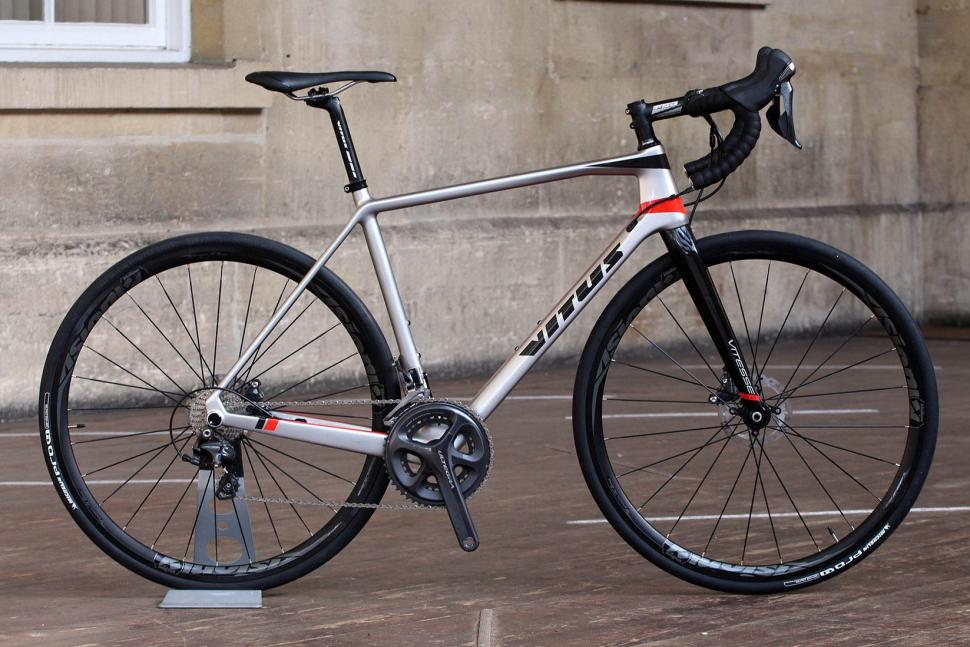
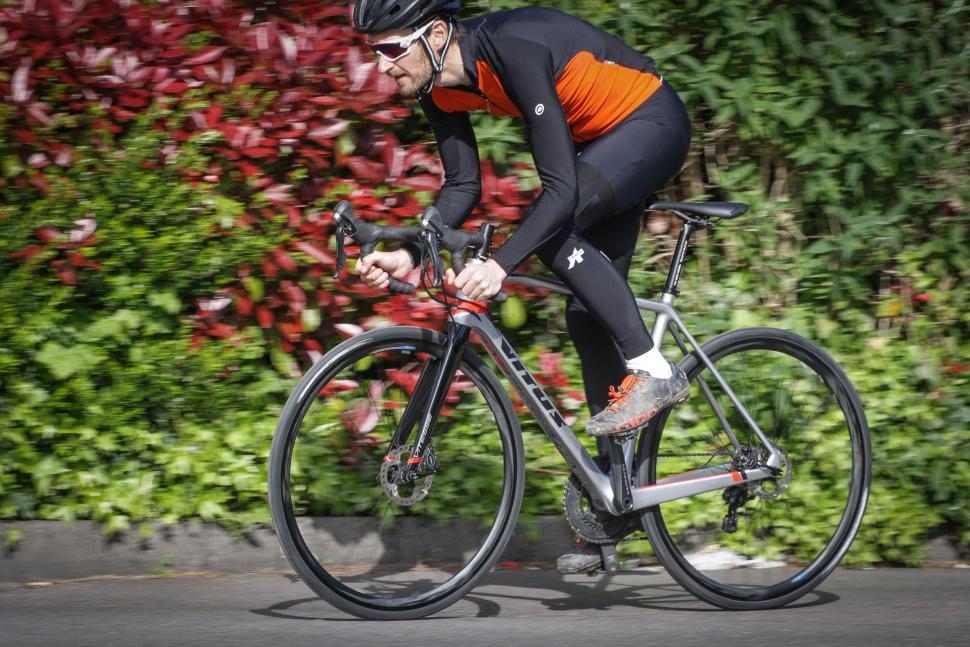


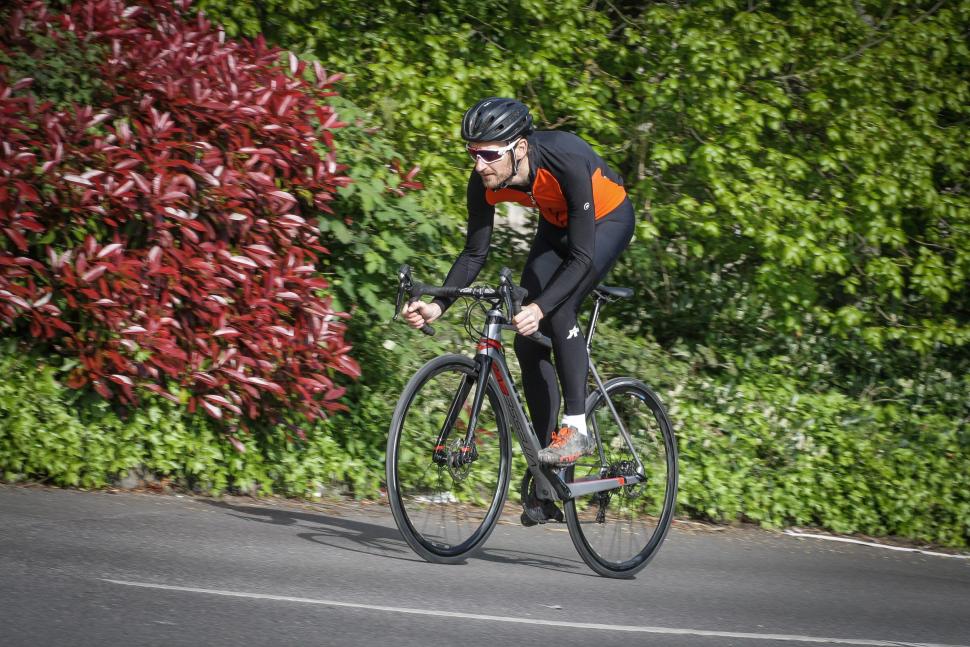
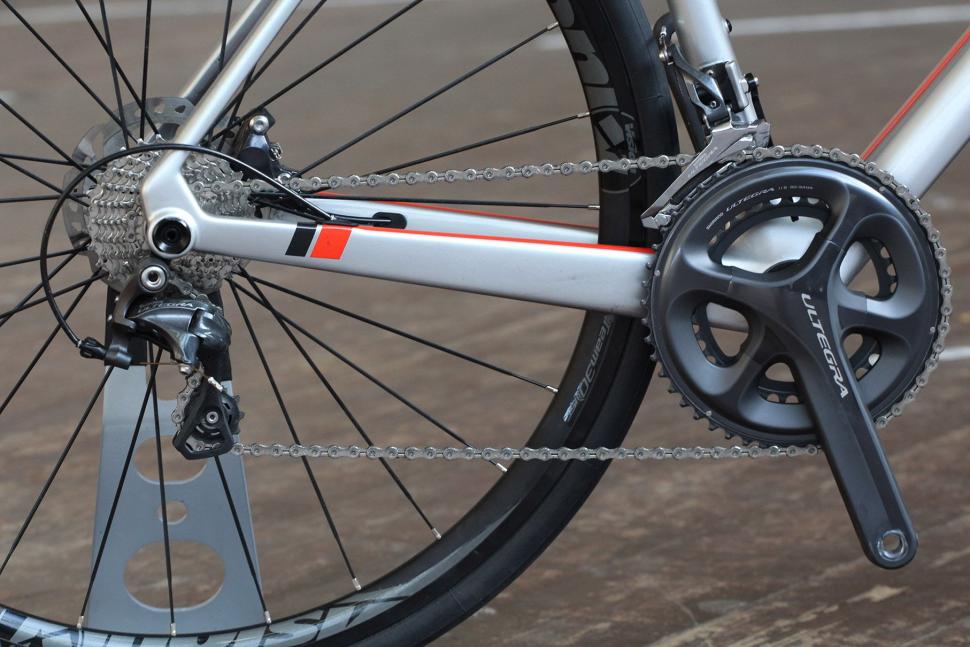


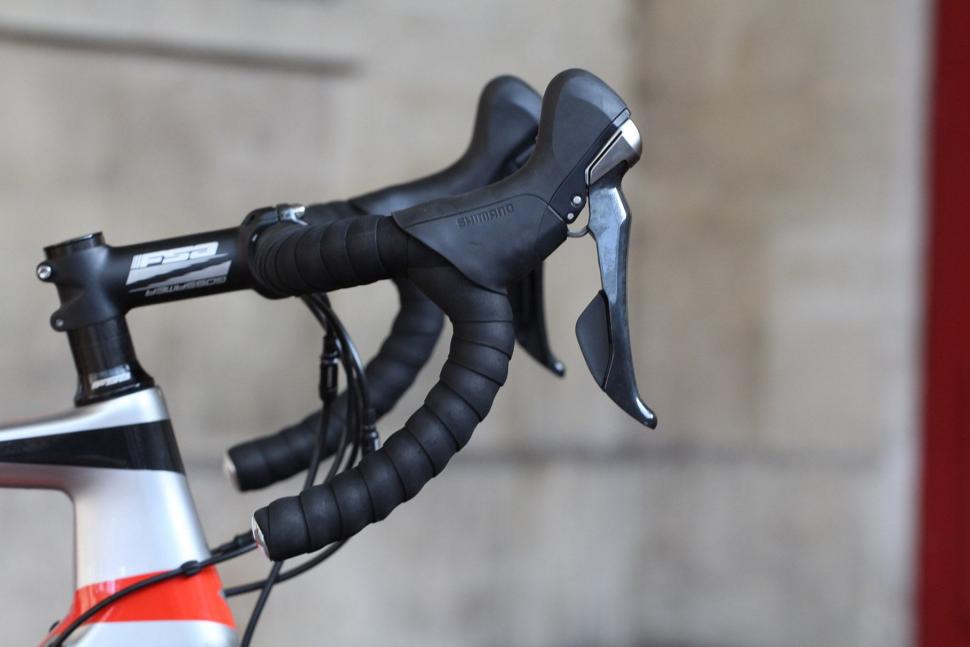


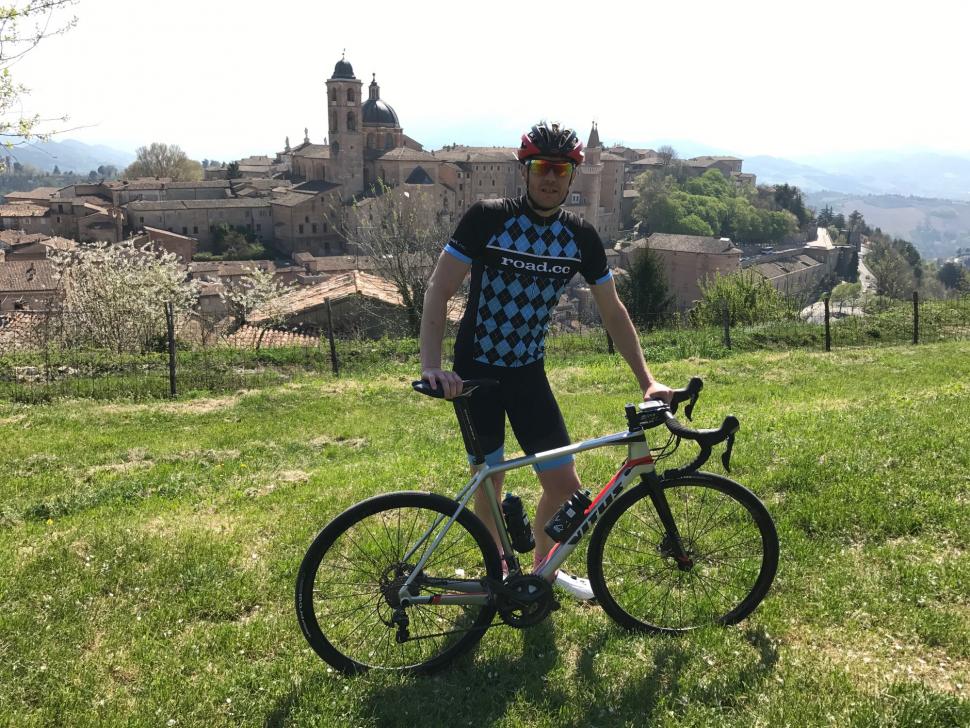




Add new comment
3 comments
Sounds ace!
...but you can't race it, at any BC or TLI race, because discs aren't allowed. So don't buy one if you want to race it!
Looks like a great package, well if you want a disc brake option. Certainly very well priced but I can't get over the lazy graphics. Unfortunately Vitus has a recent history of being very poorly designed in the aesthetics department, if this could be rectified they would have a winner on their hands.
Looks good and also good value, unlike some of the comedy pricing out there at the moment.
One small point, I don't think the rear brake hose does run in the top tube, looks more like down tube and then chainstay to me.